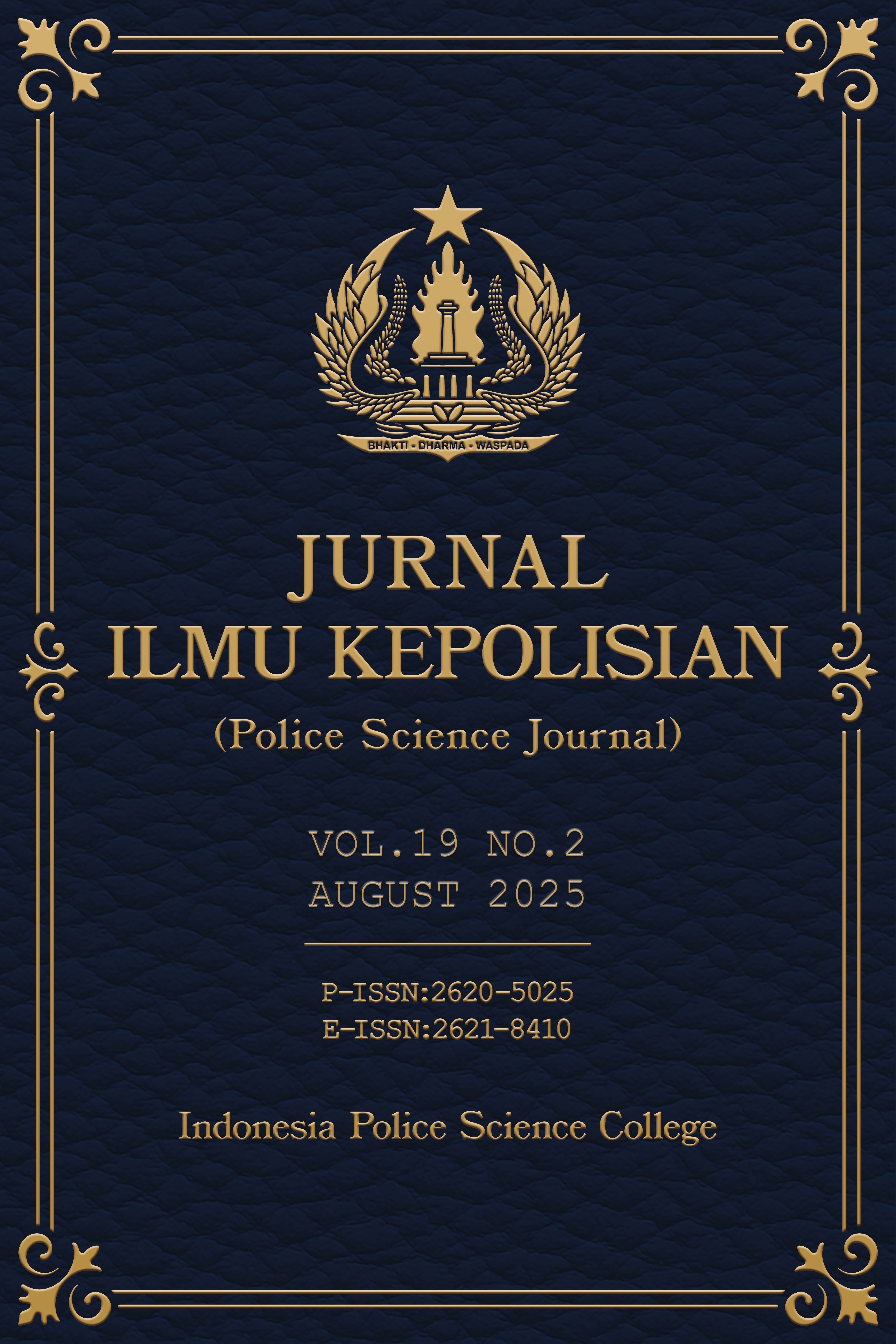Criminal Liability for Vigilantism Under Articles 351, 170, and 406 KUHP
DOI:
https://doi.org/10.35879/jik.v19i2.625Keywords:
criminal liability, criminal acts, vigilantes, eigenrichting, criminal lawAbstract
This study was conducted with the aim of determining criminal liability for the crime of vigilantism (eigenrichting) in criminal law in Indonesia. This study uses a qualitative approach with an orientation towards a deep understanding of the phenomenology of the crime of vigilantism and the form of criminal liability for the perpetrators. Data analysis in this study was conducted using a qualitative legal analysis approach. The results of this study indicate that criminal liability for the crime of vigilantism (eigenrichting) is still enforceable under Indonesian criminal law. Everyone who commits the crime will undergo sanctions and cannot be represented by another person. Criminal liability for the crime of vigilantism (eigenrichting) is indeed not regulated in a limitative manner in the laws and regulations, however in the law there are elements of a crime as stated in the Criminal Code (KUHP), namely in Section 351 concerning Abuse, Section 170 concerning Abuse and Section 406 concerning Destruction. Therefore the perpetrators of the crime of vigilantism can be subject to several Sections above.Downloads
References
Aditya Rambe. (2018). Criminal Accountability for Vigilantes for Suspected Theft Perpetrators (Medan Police Department Study). Faculty of Law, Muhammadiyah University of North Sumatra.
Didik Purwadi, Amiruddin, R. K. P. (2022). The Concept of Vigilante Action in Criminal Law. Kertha Semaya : Journal Ilmu Hukum, 10(3), 717–726.
Donsisko Marbun. (2021). Criminal Responsibility for Perpetrators of Eigenrichting (Vigilante Crime) Causing Death Through a Criminological Perspective. JURNAL RECTUM: Legal Review of Criminal Case Handling, 3(2), 276–293.
Elyada Umbu Ndapabehar and R. Rahaditya. (2023). Determination of Criminal Responsibility for Defendants with Paranoid Schizophrenia Mental Disorders in Criminal Acts of Assault. Unes Law Review, 5(4), 3141–3153.
Faliani Zaliaokta and Tajul Arifin. (2023). Analysis of the Act of Taking the Law into One's Own Hands According to the Hadith Narrated by Muslim No. 2577 and Article 170 KUHP. Journal of Politics, Social, Law and Humanities, 1(2), 330–339.
Fitri Wahyuni, A. I. and S. R. (2021). Criminal Responsibility for Perpetrators of Abuse Against Religious Figures in Indonesia. JCH (Journal of Legal Scholars), 7(1), 107–120.
Grace Yurico Bawole. (2018). Legal Analysis of Forms of Criminal Liability Based on the Concepts of Strict Liability and Vicarious Liability. Lex Et Societatis, 6(8), 16–20.
Kiki Kristanto. (2017). The Act of Eigenrighting (Take the Law into One's Own Hand) from a Criminal Law Perspective. MORALITY: Journal of Legal Studies, 2(2), 207–222.
La Ode Awal Sakti, Yeni Haerani, Yahyanto, A. C. P. A. (2024). Criminal Responsibility for Violent Offenders (Eigenrichting) Decision Number: 194/Pid.B/2022/PN.Unaha. Academy of Education Journal, 15(1), 373–383.
Laurensius Arliman S. (2019). Ensnaring the Perpetrators of Destruction of Other People's Property by Considering the Principle of Social Function of the Study of Decision Number 267/Pid.B/2015/Pn.Blg. Journal of Legal Ideas, 1(01), 17–40.
Leden Marpaung. (2005). Crimes Against Life and Body: Eradication and Prevention (3rd edition). Jakarta. Sinar Grafika.
Marwan and Jimmy P. (2009). Legal Dictionary (1st ed.). Surabaya. Reality Publisher.
Moeljatno. (1985). Principles of Criminal Law. Jakarta. Bina Aksara.
Muh.Triocsa Taufiq. (2014). A Sociological Review of Legal Actions Against Criminals in Makassar City. Faculty of Law, Hasanuddin University, Makassar.
S.R. Sianturi and E.Y. Kanter. (1989). Principles of Criminal Law in Indonesia and Their Implementation. Jakarta. Alumni.
Soerjono Soekanto. (2019). Factors Influencing Law Enforcement. Jakarta. Rajawali Pers.
Soesilo. (2008). KUHP (Criminal Code (KUHP) and KUHAP (Criminal Procedure Code). Yogyakarta. Gama Press.
Sudikno Mertokusumo. (2010). Indonesian Civil Procedure Law. Yogyakarta. Atma Jaya University.
Veronica Sherly Margareta and Waspiah. (2020). Impact and Law Enforcement of Vigilante in the Society. Jurnal Scientia Indonesia, 6(1), 1–18.
Wirjono Prodjodikoro. (2008). Principles of Criminal Law in Indonesia. Jakarta. Refika Aditama.
Downloads
Published
Issue
Section
License
Copyright (c) 2025 Jurnal Ilmu Kepolisian

This work is licensed under a Creative Commons Attribution-ShareAlike 4.0 International License.











